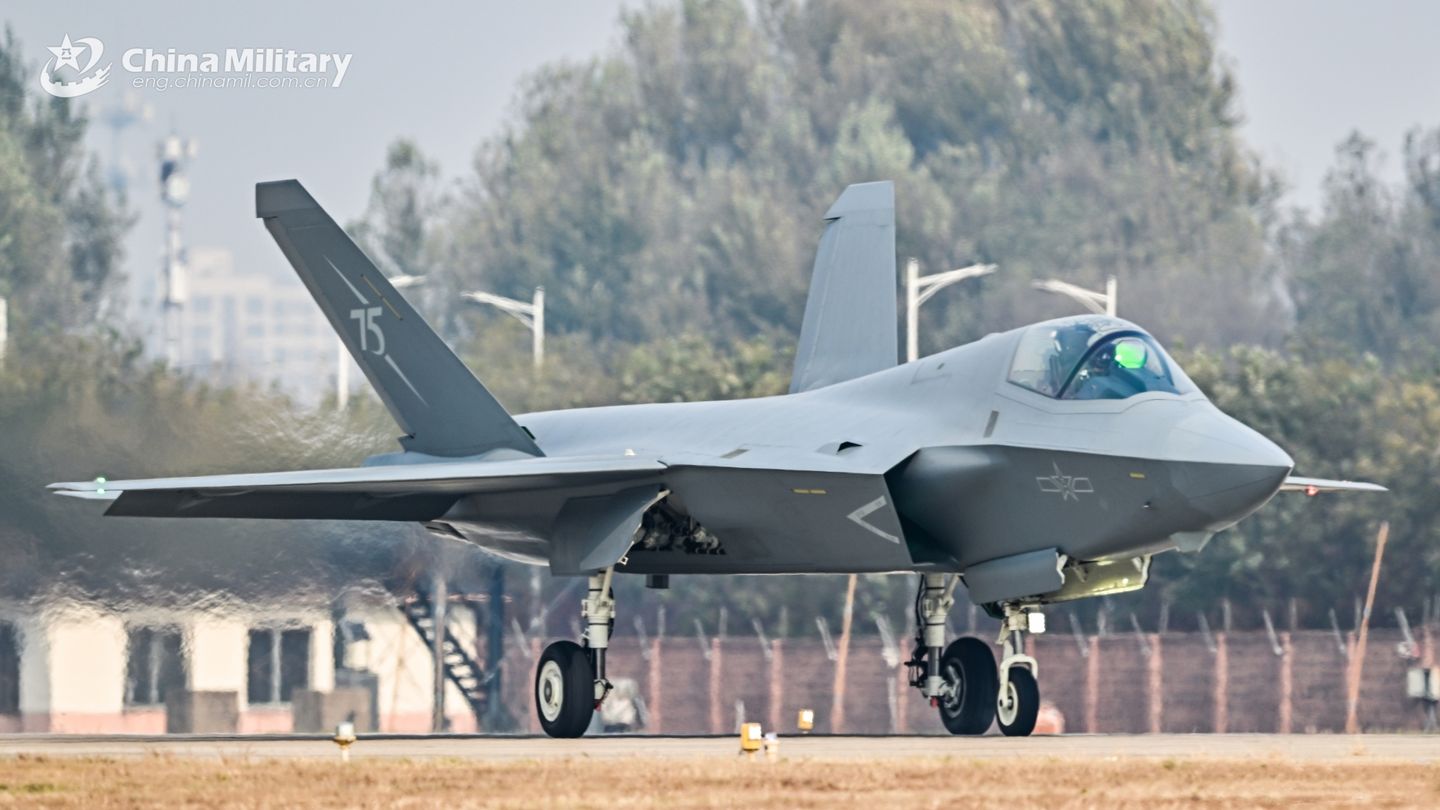
China’s military power is increasing rapidly with the deployment of advanced conventional and nuclear strike weapons that threaten the U.S. homeland and bases abroad, Air Force leaders told a Senate panel.
Three service leaders also confirmed in joint testimony to the Senate Appropriations defense subcommittee that China recently showed off two new stealth jet fighters that were disclosed unofficially on Chinese social media late last year.
The prepared testimony by Air Force Secretary Troy Meink, Chief of Staff Gen. David W. Allvin and Chief of Space Operations Gen. B. Chance Saltzman provides new details on Beijing’s rapidly expanding military forces that were described as the Air Force’s “sole pacing threat.”
“The scope and severity of threats to our homeland and national interests are significant and increasing, and we now face one of the most dangerous security environments in our history,” the officials said in testimony made public Thursday.
“China is the only country with the will and increasing capability to challenge American vital interests,” the joint statement said.
They warned that the Air Force is struggling to balance spending on new weapons and modernization of forces with keeping forces ready and prepared if called on to wage war.
“This tension has been out of balance over the last few years, underfunding our foundational readiness accounts, and we seek to correct this trend in fiscal 2026,” the statement said.
A major worry is protecting the U.S. military forces on Earth from Chinese attacks directed through the use of hundreds of military surveillance and targeting satellites.
“This kill web has extended the range and accuracy of PLA weapons to hold U.S. forces at risk,” the statement said
New resources are needed for the Space Force to be able to defeat the kill web and protect American forces from space-based attacks.
The officials testified before the Senate panel on the Air Force’s $301.1 billion budget request, about a third of the total $1.01 trillion military spending request.
China’s military spending nearly doubled in the past 11 years and increased by 6% annually. It is about equal to the U.S. defense budget today, the officials said.
Air and missile threats from China include 1,900 total fighter jets, among them 225 J-16s that can fire long-range air-to-air missiles, and growing numbers of fifth-generation J-20 fighters.
“The PLA also unveiled two new sixth-generation fighters in December of 2024,” the statement said.
The aircraft include the J-35A and the J-36, the latter a tailless triple-engine stealth fighter.
Chinese military drones are also increasing in numbers and sophistication.
In the past three years, the People’s Liberation Army reached several milestones in drone aircraft. They include the operational fielding of the Xianglong jet-powered drone, disclosure of the supersonic WZ-8 drone and a redesigned version of the GJ-11 stealth unmanned combat air vehicle.
“China has signaled its efforts in other next-generation technology, including swarming capabilities and a future multi-domain kill-web designed to target penetrating counterair by coordinating across aircraft, sensors, and missiles,” the statement said.
Sophisticated PLA electronic warfare gear is also advancing with new communications jamming, electronic countermeasures. Aerial refueling, advanced airborne early warning and control, and airlift capabilities are also growing.
Chinese missiles constitute a major threat to the United States.
The PLA Rocket Force is engaged in a long-term modernization.
Current forces include over 900 short-range ballistic missiles capable of strike Taiwan, 400 ground-launched cruise missiles that can strike the so-called first island chain along the Chinese coast, 1,300 medium-range ballistic missiles reaching out to the second island chain, 500 intermediate-range ballistic missiles that can hit portions of Alaska and Australia, and over 400 intercontinental ballistic missiles capable of delivering nuclear weapons across the world.
The deployed DF-17 hypersonic glide missile is enhancing PLA missile power and can be used to strike U.S. and foreign military bases and fleets in the Western Pacific.
A longer-range DF-27 hypersonic missile is also being fielded.
“These threats place U.S. bases, allies, interests, and our homeland in an increasing amount of danger,” the statement said.
PLA space weapons also pose significant threats to U.S. space-based intelligence, communications and surveillance systems.
China’s space weapons that can target orbiting U.S. satellites now include direct-ascent anti-satellite missiles, co-orbital hunter-killer satellites, electromagnetic warfare, directed-energy systems, and mobile jammers to blast communications and GPS satellites.
Also, in the future, the PLA will deploy sophisticated space weapons among roving satellites used for inspection and repair that can also function as weapons, and ground-based laser weapons to disrupt satellite sensors.
“Taken together, China’s space architecture does not just threaten our satellites, but it increasingly allows the PLA to better track, target, and strike our joint force on Earth,” the statement said.
China’s military cyber threats are being prepared for use in a crisis or conflict to attack systems used by the U.S. military for power projection.
“Beijing-linked cyber actors have targeted a wide range of government, critical infrastructure, and business networks in the United States and Japan, including those that support the U.S. and Japanese forces,” the statement said.
“In addition to critical infrastructure, Beijing-backed cyber actors continue to target U.S. defense organizations and contractors, likely for intelligence collection and cyberattack prepositioning.”
“All these capabilities continue to expand China’s overall ability to project power, threatening American interests at home, in the Indo-Pacific, and throughout the world,” the statement said.
U.S. officials have said Chinese hackers penetrated U.S. infrastructure on the strategic island of Guam, a major U.S. military hub.
The testimony called for congressional funding and support for Air Force modernization. The modernization program is building the new Sentinel intercontinental ballistic missiles, the new B-21 strategic bomber the new F-47 jet.



![Man Arrested After Screaming at Senators During Big Beautiful Bill Debate [WATCH]](https://www.right2024.com/wp-content/uploads/2025/06/Man-Arrested-After-Screaming-at-Senators-During-Big-Beautiful-Bill-350x250.jpg)













